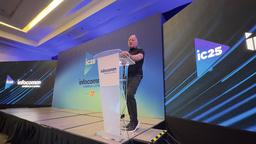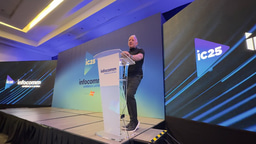Adapt, Align, Advance: Strategic Innovation in the Face of Disruption

The U.S. audiovisual (AV) industry is facing an unprecedented convergence of challenges that span the manufacturing, integration, and design/consulting sectors. Supply chain volatility, accelerated technological evolution, labor shortages, and shifting client expectations have strained the AV ecosystem. Now, the off-again, on-again threat of tariffs imposed by the current federal administration is further compounding the pressure, especially on imported components critical to AV manufacturing and system integration.
These macroeconomic pressures are converging with a new era of customer sophistication. Clients no longer want AV systems that merely “work”—they want adaptable, intelligent, standards-based platforms seamlessly integrated with their broader IT and operational infrastructure.
Across client verticals, customer voice organizations are shaping technology priorities:
- In higher education, the Higher Education Technology Managers Alliance (HETMA) and the Educational Technology Collaborative (ETC) are redefining expectations for equitable, scalable AV in learning environments.
- The Healthcare Information and Management Systems Society (HIMSS) and resource sites like HealthySimulations champion interoperability, telehealth readiness, and data-driven outcomes in healthcare.
- The Interactive Multimedia & Collaborative Communications Alliance (IMCCA) and the AV User Group (AVUG) lead conversations about hybrid collaboration, UC platforms, and digital employee experiences in the workplace.
Integrators, manufacturers, and design consultants who fail to listen to these emerging voices risk falling behind technically, operationally, and reputationally.
The Solution: Proactive Industry Collaboration
Forward-thinking AV firms across the value chain are responding by shifting from reactive delivery to a proactive strategy anchored by open standards, intelligent technology, and stakeholder-driven design.
Manufacturers must invest in modular product architecture, nearshoring production, and cloud-connected systems to mitigate tariffs and supply instability. Adopting open standards like IPMX (Internet Protocol Media Experience) is accelerating this trend, enabling IT-native, interoperable products that are easier to scale. AI and machine learning are embedded into hardware and platforms for automated diagnostics, system analytics, and personalization. These smart technologies reduce support overhead and drive better user experiences. Energy-efficient designs, recyclable components, and green certifications are becoming baseline expectations in education, healthcare, and enterprise procurement.
Integrators must engage more deeply with sector-specific stakeholder groups to understand real-world pain points and use that knowledge to customize AV design, delivery, and support strategies. They are embracing software-defined systems, cloud-first infrastructure, and AI-enhanced management tools. AV-as-a-Service (AVaaS) models and remote monitoring platforms give clients more flexibility and lower long-term costs. Crucially, integrators align more closely with IT departments and user experience teams, ensuring systems are secure, scalable, and designed for non-technical users—especially in hybrid workplace and clinical settings.
Consultants—including traditional AV consulting firms and the expanding roster of architecture/engineering (AE) and MEP firms with AV design expertise—should expand their roles from technical advisors to strategic collaborators. They guide clients through phased roadmaps and help balance budget, risk, and innovation. They also incorporate tariff impact analysis and standards alignment into their specifications—often recommending enterprise-focused ecosystems as a hedge against obsolescence while adopting voice-of-the-customer-informed frameworks to design with user outcomes in mind, not just technical compliance.
The Result: Customer-Centric Future Forward Solutions
These cross-sector collaborative strategies are already delivering results:
- Manufacturers are reducing integration time and increasing adoption in enterprise environments.
- Integrators who actively consult user groups are winning more repeat business and reducing costly redesigns.
- Consultants building stakeholder-aligned, scalable systems are becoming embedded in long-term digital transformation efforts.
Closing Thoughts
AVIXA continues to be the cross-sector convening force for coalescing these efforts. Through its InfoComm tradeshows, market councils, standards committees, training programs, and this Xchange forum, AVIXA is helping manufacturers, integrators, and consultants:
- Stay aligned with emerging protocols and interoperability frameworks.
- Translate customer voices into certifiable best practices.
- Expand the industry's skill base through certification, research, and workforce development.
AVIXA’s collaboration with end-user advocacy groups helps ensure that industry strategies aren’t developed in silos but in sync with actual user needs.
The AV industry stands at a crossroads. It is no longer just about equipment—it’s about ecosystems. Tariff impacts, supply instability, labor challenges, and rapidly evolving user expectations are not temporary obstacles but structural shifts. But with those challenges come opportunities to lead.
The AV sector can move beyond resilience toward reinvention by adopting open standards, integrating AI for intelligent management, and aligning solutions and services with client communities.
Adapt, align, and advance. This is how the AV industry secures its future and delivers greater value in every signal, system, and space.
-
Xchange Advocates are recognized AV/IT industry thought leaders and influencers. We invite you to connect with them and follow their activity across the community as they offer valuable insights and expertise while advocating for and building awareness of the AV industry.






Please sign in or register for FREE
If you are a registered user on AVIXA Xchange, please sign in